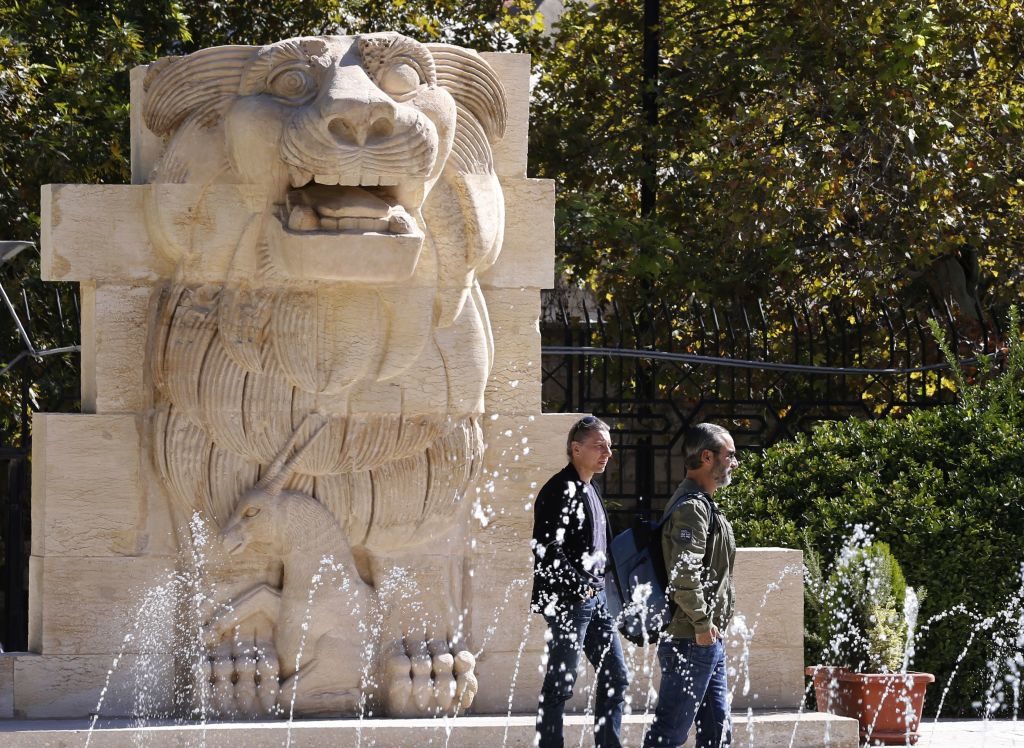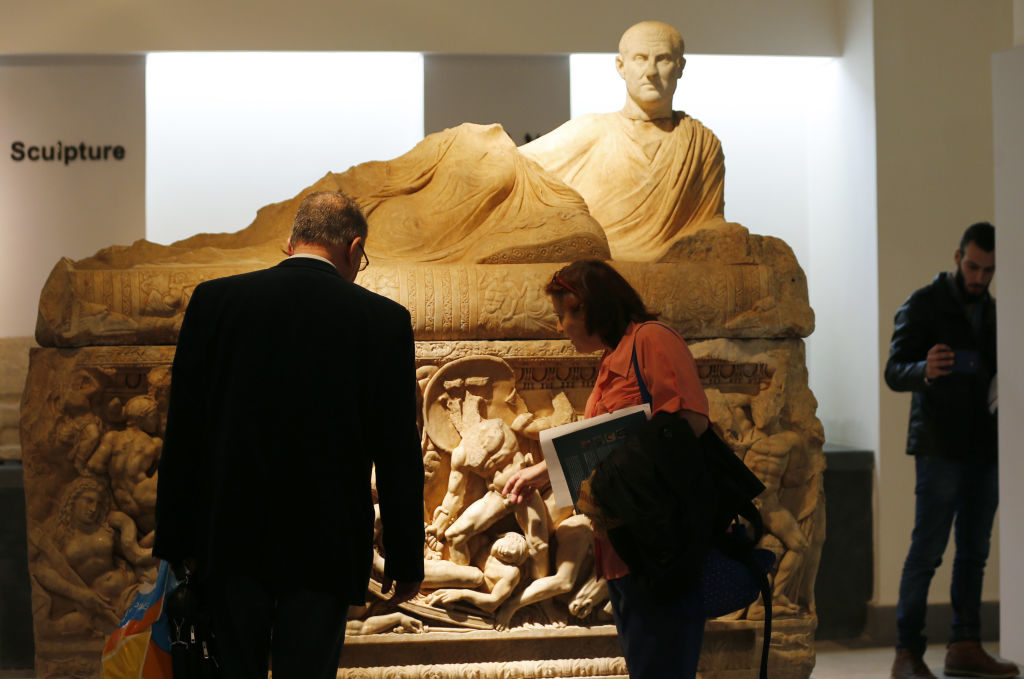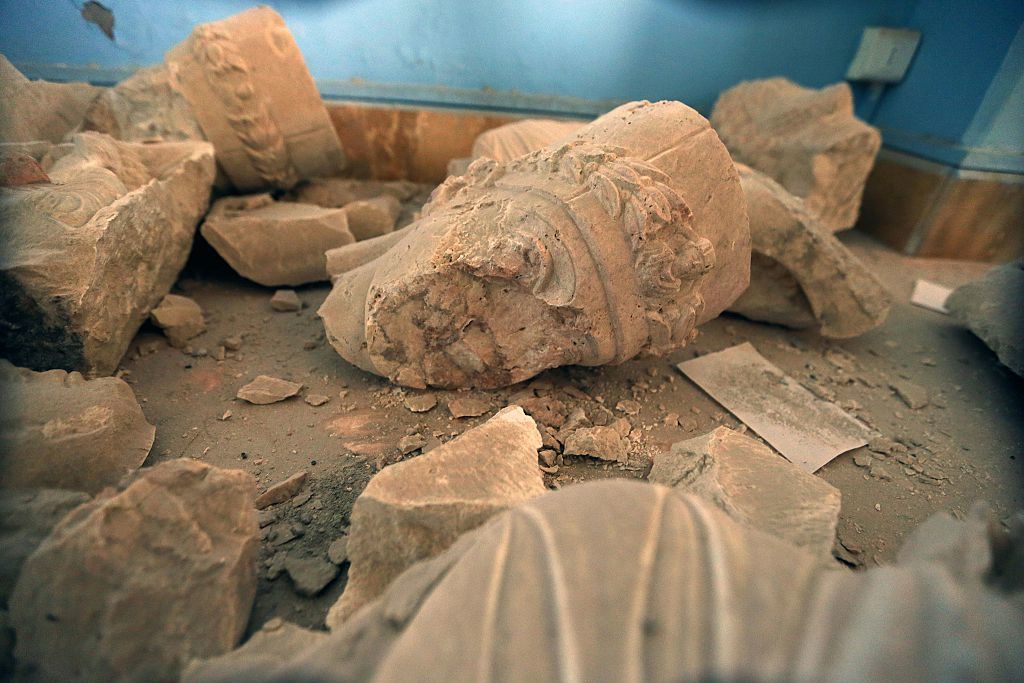Politics
The National Museum of Damascus Reopens in the Heart of War-Torn Syria After More Than Six Years
The museum closed in 2012 amid the country's civil war.

The museum closed in 2012 amid the country's civil war.

Naomi Rea

More than six years after Syria’s largest museum was forced to close amid the country’s brutal civil war, the National Museum of Damascus has partially reopened to the public.
The institution has returned newly restored artifacts to public display, including Palmyra’s famous Lion of al-Lat, which took pride of place in the museum’s garden. Also on view are scores of objects that had been seized and stored by the government after smugglers attempted to transport them across the border or sell them overseas during the war.
Visitors, Syrian government officials, and sympathetic experts in archaeology and restoration all gathered at the Syria’s national museum on Sunday to mark the reopening. The newly open wing will present artifacts from prehistory, the ancient east, and the classical and Islamic eras, according to the museum’s deputy director Ahmad Deeb.
Long renowned for its antiquities collection, the Damascus museum shuttered in 2012 as the war, which began in 2011, closed in on the city. As the metropolis was besieged by rebel fire, authorities evacuated the museum’s ancient artifacts to protect them from damage.
Cultural heritage has been a popular target for terrorist organizations, and the Damascus museum holds one of the most important collections in the Middle East. Mindful of the destruction and looting of Baghdad’s National Museum and other sites in Iraq during the 2003 Iraq War, authorities hid some 300,000 artifacts from 34 museums in top-secret locations.

Visitors tour the antiquities museum in the Syrian capital Damascus on October 28, 2018. Photo by Louai Beshara/AFP/Getty Images.
The museum’s partial reopening signals a return to normalcy for the city, and authorities hope to fully open the building soon. Culture minister and antiquities chief Mohamed al-Ahmad told media at the opening, “The opening of the museum is a genuine message that Syria is still here and her heritage would not be affected by terrorism.”
The inauguration of the museum signals change in the violence-addled region at a time when military forces led by Syrian president Bashar al-Assad, and backed by allies Russia and Iran, have been able to recapture rebel-held areas and secure the capital in a series of battles since April.
In parts of the country that remain outside Assad’s control, the conflict rages on. The war has claimed the lives of more than 400,000 people and decimated countless historic sites.

A picture taken on March 31, 2016 shows pieces of beheaded and mutilated sculptures at the museum of the ancient city of Palmyra, some 215 kilometers northeast of Damascus. Photo by Joseph Eid/AFP/Getty Images.
Cultural heritage is a defining feature of Syria, which was a popular trade route throughout ancient history. The UNESCO World Heritage site of Palmyra, known as a home of well-preserved artifacts from Greek, Roman, Persian, and Islamic cultures, was nearly totally destroyed by the Islamic State terrorist group. The militants, who see representational art as sacrilegious, occupied the city twice between 2015 and 2017. Authorities are now hoping to reopen it as early as 2019.
Elsewhere in the country, the city of Raqqa has been reduced to rubble and Aleppo’s Old City has been ravaged by fighting, having been occupied by ISIS from July 2012 to December 2016.